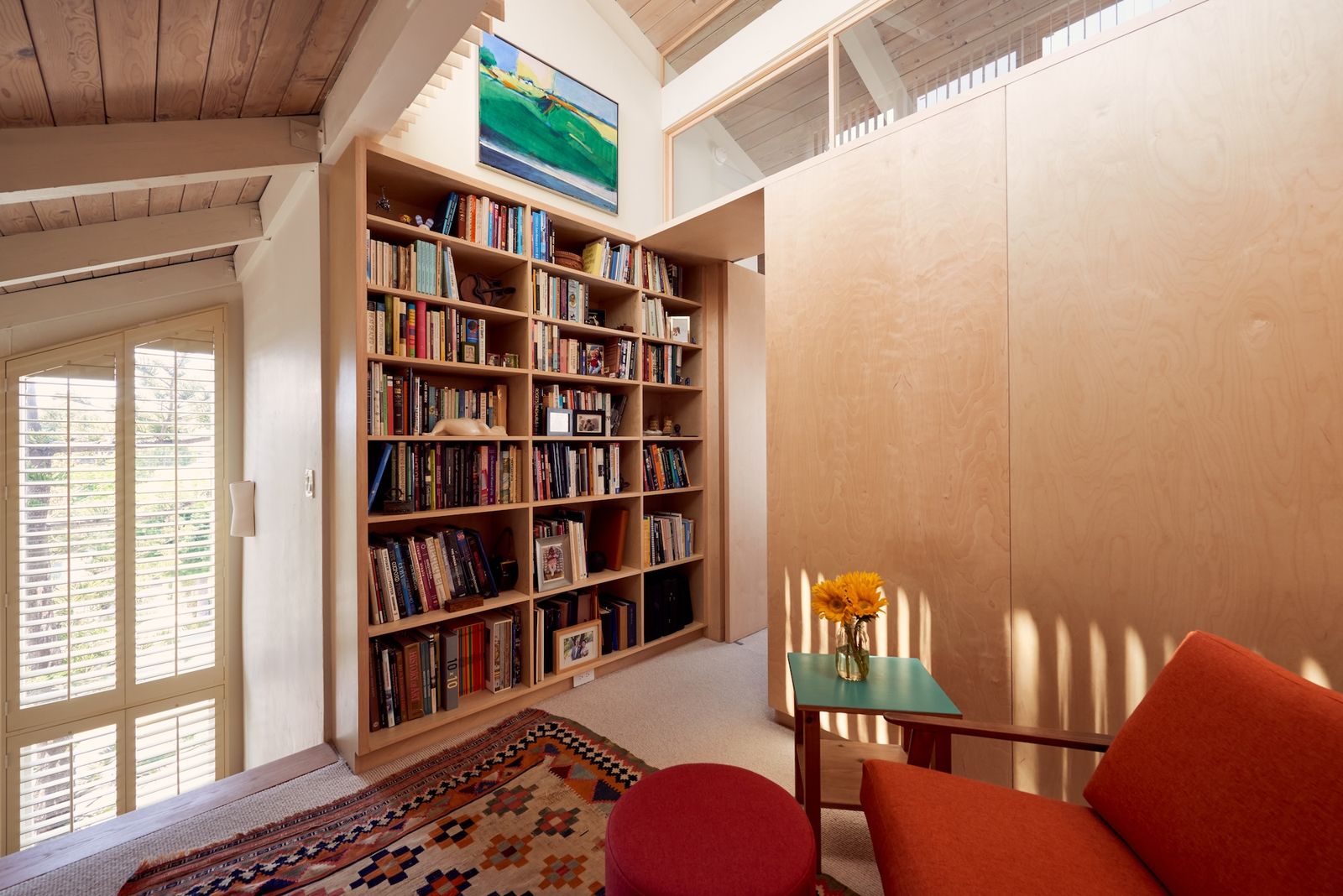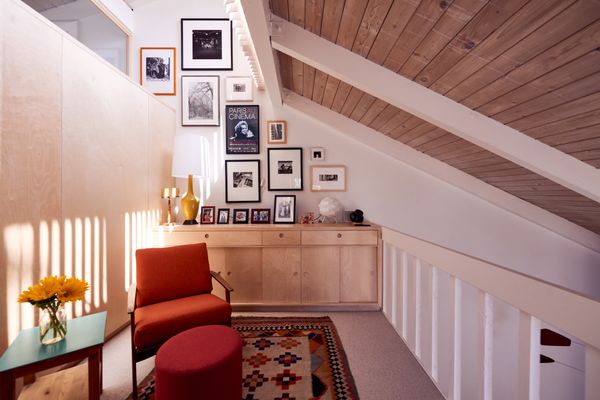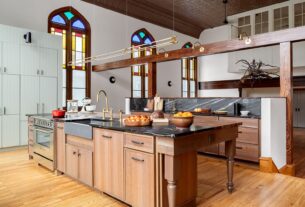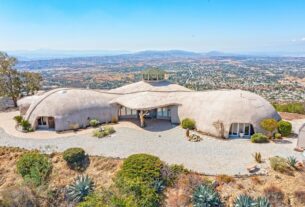After buying her split-level rental from its original owners, architect Marisa Kurtzman devised a multipurpose partition that made every square foot count for her growing family.

Welcome to How They Pulled It Off, where we take a close look at one particularly challenging aspect of a home design and get the nitty-gritty details about how it became a reality.
Many renters who aspire to own their home can’t help but fantasize about what they’d do to their space if only their names were on the deed. For professional architects and designers like Marisa Kurtzman, a partner at Los Angeles firm Frederick Fisher and Partners, such hypotheticals are inevitable.
Since 2018, she and her then-boyfriend, writer and podcast producer Gideon Brower, learned to live with the limitations of their townhouse located in Santa Monica’s Ocean Park neighborhood. The two-bedroom, 1,100-square-foot unit in a wood-clad complex built in the early 1970s channeled Moore, Lyndon, Turnbull and Whitaker (MLTW) and Joseph Esherick at Sea Ranch vibes. Its groovy California charm, proximity to the ocean, high ceilings, and an appealing split-level layout allowed them to gloss over some drawbacks. All the while, Marisa “fantasized about how I would fix up the place if we owned it,” she says.

Architect Marisa Kurtzman, a partner at Frederick Fisher Partners in Los Angeles, transformed the upstairs loft of her family’s 1,100-square-foot condo by designing a multipurpose functional partition dubbed “the Superwall.” She and her husband, Gideon Brower, initially rented the unit from the original owners, who also built the complex.
Photo by Takashige Ikawa
A lot changed in the years that followed. Marisa and Gideon got married, had a daughter, and bought the unit from the original owners, who happened to be the building’s developers. Their growing family and working from home during the pandemic accelerated the urgency of addressing the space’s nagging inefficiencies—especially upstairs, where an open loft served as the very-not-soundproofed primary bedroom and potentially valuable space was wasted.

Space under the stairs is useful as storage (and an enticing spot for the couple’s daughter and dog).
Photo by Takashige Ikawa
Marisa eventually devised a solution to these dilemmas that specifically addressed work-from-home demands. She designed a partial-height, blonde plywood partition capped with a band of operable windows that enhances the structure’s existing clerestory. “Suddenly, the space divider was everything: More storage, a natural light and ventilation source, and separation from downstairs,” Marisa explains. “That’s when we started calling it ‘the Superwall.’” This feature divides the space into a 240-square-foot bedroom/office at the rear, with a bonus cozy library alcove perched over the living room. “What could have been a leftover space is now my favorite room in the house,” Marisa says.

Marisa and Gideon turned the transitional stair landing area into a now-loved library alcove and reading nook.
Photo by Takashige Ikawa
See the full story on Dwell.com: How They Pulled It Off: A “Superwall” That Adds Privacy (and Storage) to a 1970s Condo
Related stories:


